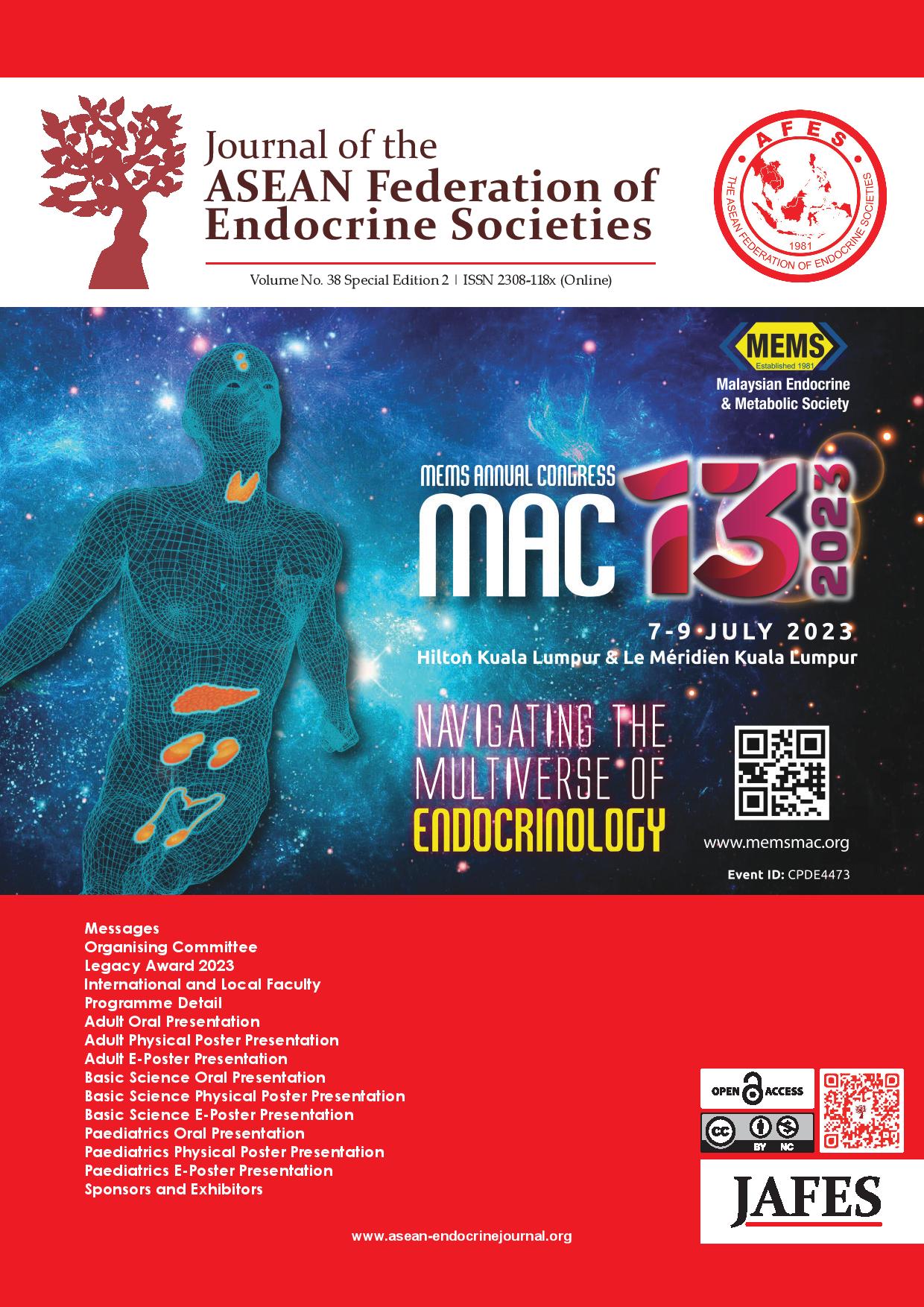NEW ONSET DIABETES BEFORE AND DURING THE COVID-19 PANDEMIC AND FACTORS ASSOCIATED WITH DIABETIC KETOACIDOSIS IN SELECTED TERTIARY HOSPITALS
Keywords:
DIABETES, COVID-19, DIABETIC KETOACIDOSISAbstract
NTRODUCTIONIntroduction
New onset diabetes mellitus (DM) and diabetic ketoacidosis (DKA) among children have increased worldwide following the COVID-19 pandemic. This study aimed to determine the frequency of new-onset DM and DKA during the COVID-19 pandemic as compared to the pre-pandemic period and to determine the factors associated with DKA among children with new onset DM.
METHODOLOGY
A cross-sectional retrospective study was conducted at four paediatric endocrine tertiary hospitals in Klang Valley, Selangor among all patients with new-onset diabetes during two-time intervals, 2015 to 2019 (before the pandemic) and 2020 to 2022 (during the pandemic). Data on patients’ demographics and clinical characteristics were collected.
RESULT
Three hundred eighty-eight patients with new onset DM were included. Both new-onset DM and DKA showed increased relative frequencies after the onset of the pandemic (17.2% in 2021, 14.1% in 2020, 11.2% in 2019, 12.8% in 2018) and (18.5% in 2021, 16.2% in 2020, 9.3% in 2019, 10.3% in 2018) respectively. The relative frequencies of patients with newonset type 1 diabetes mellitus (TIDM) increased during the pandemic, but type 2 diabetes mellitus (T2DM) cases declined. Median BMI was found to be higher among patients with new-onset T2DM during the pandemic compared to those who developed T2DM pre-pandemic (p=0.04). Patients with T2DM also had sa horter duration of symptoms (p=0.019) and lower HbA1c (p=0.008) during the pandemic. On multiple logistic regression, a younger age, lower BMI, T1DM, higher blood glucose and higher HbA1c were factors significantly associated withnew-onsett DKA.
CONCLUSION
There was an increase in Type 1 DM and DKA following the pandemic. Awareness of at-risk groups and associated clinical characteristics enables early detection of new-onset DKA and DM. Early surveillance of T2DM among persons with higher BMI should be emphasised. Public health education and campaigns for lifestyle modification, infection control precautions and COVID-19 vaccination should be actively implemented.
Downloads
References
*
Downloads
Published
How to Cite
Issue
Section
License
Copyright (c) 2023 Fatin Farihah Wan Ahmad Nasir, Muhammad Yazid Jalaludin, Azriyanti Anuar Zaini, Nalini Selveindra, Poi Giok Lim, Yee Lin Lee

This work is licensed under a Creative Commons Attribution-NonCommercial 4.0 International License.
The full license is at this link: http://creativecommons.org/licenses/by-nc/3.0/legalcode).
To obtain permission to translate/reproduce or download articles or use images FOR COMMERCIAL REUSE/BUSINESS PURPOSES from the Journal of the ASEAN Federation of Endocrine Societies, kindly fill in the Permission Request for Use of Copyrighted Material and return as PDF file to jafes@asia.com or jafes.editor@gmail.com.
A written agreement shall be emailed to the requester should permission be granted.







